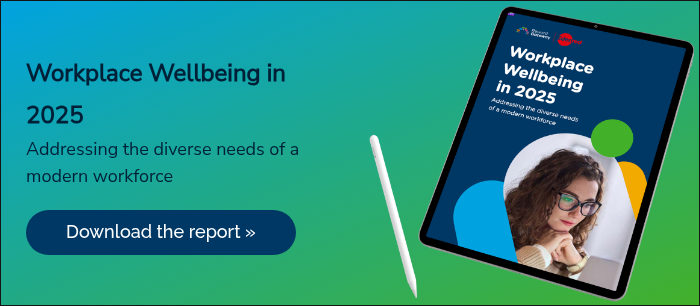Employee journey mapping is a business process that outlines the various stages an employee goes through at work, from the moment they apply for a job with you to the day they leave the company. By mapping out these stages, you can better understand where – and how – to enhance the employee experience and make it more engaging and fulfilling.
Why is employee journey mapping important?
Employee journey mapping will enable your organization’s HR and leadership teams to have a stronger understanding of what employees are experiencing at every stage of their careers under your roof. It means that important steps aren’t overlooked, the right supports can be offered at the right times and employees will stay longer on average.
More specifically, organizations that create an employee journey map can enjoy the following benefits:
1. Stronger employee engagement
 When you take the time to understand the employee journey, you can create initiatives that truly resonate with your team. Sending a “Welcome to the team!” eCard on an employee’s first day, additional recognition at important milestones like the first month and anniversaries take mere seconds to do, but can make a longlasting difference in employees’ sense of belonging.
When you take the time to understand the employee journey, you can create initiatives that truly resonate with your team. Sending a “Welcome to the team!” eCard on an employee’s first day, additional recognition at important milestones like the first month and anniversaries take mere seconds to do, but can make a longlasting difference in employees’ sense of belonging.
Engaged employees are more motivated and committed to their work, which leads to a vibrant workplace culture.
2. Improved retention
Identifying pain points in the employee journey allows you to tackle issues before they lead to turnover. For example, 51% of employees say that recognition of personal milestones leads to them feeling appreciated. By building which milestones to consistently highlight, you can create a work environment that encourages loyalty and reduces attrition rates.
3. Optimized resource allocation
Employee journey mapping helps you pinpoint where your resources are needed most. By understanding the challenges your employees face, you can allocate support and resources more effectively, ensuring that everyone gets the help they need.
4. Increased productivity
A positive employee experience translates to higher productivity levels. 69% of employees say their workplace wellbeing would improve if they were thanked more. When employees feel valued and supported throughout their journey, they’re more likely to perform at their best, contributing to the overall success of your organization.
5. Better employer reputation

It’s a simple fact of life: People talk.
Organizations that prioritize employee experience often enjoy a stronger reputation in the job market. Offering exciting or exclusive benefits is one thing, but how your organization interacts with and engages its employees says a whole lot more.
A strong employer brand not only attracts top talent, but also helps you stand out as an employer of choice in a competitive market.
The key stages of the employee journey
To effectively map the employee journey, it’s essential to recognize the key stages that employees go through during their time with your organization. Each stage presents unique opportunities and challenges:
1. Hiring
This is a prospective employee’s first impression of your organization. It includes everything from the job posting itself to the interview process. Ensure that job postings are proofread and that all relevant requirements and responsibilities are listed – along with a salary range. Work with the role’s manager to ensure you are providing a clear picture and that positive aspects of your culture are described and demonstrated to attract your best candidate.
2. Onboarding
Onboarding is crucial for helping new employees integrate into your organization. This stage involves training, orientation and socialization. A well-structured onboarding process makes new hires feel welcomed and prepared, which can significantly impact their long-term engagement.
Create a set of foundational resources that you want all of your employees to recognize and understand – this can include your organization’s products (if it sells any), messaging and branding, cultural expectations and activities, descriptions of all employee resource groups (like walking enthusiasts, working parents, queer+ alliances, etc.) along with instructions on how to join them. Ensure that managers lead the charge on introducing their new employee to colleagues, other departments and leadership.
 3. Development
3. Development
The development stage is focused on employee growth and career advancement – which means that it spans the bulk of their time with you. Organizations that invest in training, mentorship and professional development opportunities show a commitment to their employees’ success, enhancing job satisfaction and retention.
4. Retention
Retention is all about keeping employees engaged, pleasantly challenged and satisfied in their roles. This stage involves ongoing support, recognition and opportunities for advancement. Prioritizing retention helps maintain a stable workforce and reduces turnover costs.
5. Offboarding
Whether an employee stays with your organization for two or twenty years, eventually we must always say goodbye.
Offboarding occurs when an employee leaves your organization. A thoughtful offboarding process can provide valuable insights into the employee experience and help maintain a positive relationship, even after they’ve departed. This stage is also an opportunity to gather feedback for future improvements – employees may be much more honest with you when they are leaving..
How to create an employee journey map
Creating an effective employee journey map is a systematic process. Here are some important steps to get you started:
1. Define your objectives
Before you begin, determine what your goals are. Begin by clarifying what you hope to achieve with your employee journey mapping initiative. For example, are you looking to improve engagement, reduce turnover or enhance onboarding?
2. Conduct comprehensive research
 Conduct surveys, interviews and focus groups with your employees and pay close attention to employee activity in the office on the day-to-day level. Understanding employee perceptions and experiences at each stage of the journey is crucial for creating an accurate map.
Conduct surveys, interviews and focus groups with your employees and pay close attention to employee activity in the office on the day-to-day level. Understanding employee perceptions and experiences at each stage of the journey is crucial for creating an accurate map.
3. Segment employee personas
Different employees have varying experiences based on their roles, demographics and backgrounds. This segmentation is not to assign value or rankings, but merely to better understand the needs of your constituent demographics and offer more appropriate benefits and programs. Segmenting employee personas allows you to tailor your journey map to address the unique needs of existing and incoming employee groups.
4. Plot important touchpoints
Identify key touchpoints throughout the employee journey, like recruitment, onboarding, performance reviews and exit interviews. Mapping these interactions will help you understand where improvements can be made.
5. Gather and analyze employee feedback
Solicit feedback from employees at various stages of their journey. This feedback is invaluable for identifying pain points and areas for improvement. Use both qualitative and quantitative data to inform your analysis.
6. Implement changes and monitor progress
Once you’ve created your employee journey map, implement changes based on your findings. Keep an eye on the impact of these changes over time to ensure they’re effective, and be ready to make adjustments as needed.
Best practices for employee experience journey mapping
To maximize the effectiveness of your employee journey mapping, consider these best practices:
1. Use an employee-centered approach
 Focus on the employee perspective in your journey mapping to align initiatives with their needs. Recognize diverse employee needs at different stages and tailor your initiatives accordingly. By prioritizing employees, you enhance engagement and loyalty, driving organizational success.
Focus on the employee perspective in your journey mapping to align initiatives with their needs. Recognize diverse employee needs at different stages and tailor your initiatives accordingly. By prioritizing employees, you enhance engagement and loyalty, driving organizational success.
2. Incorporate a diverse range of employee perspectives
Engage employees from various departments, levels and backgrounds in the mapping process. This diversity will provide a more comprehensive view of the employee experience and help identify unique challenges faced by different groups within your organization. It’s essential to ensure that every voice is heard, as this will lead to a more inclusive and effective journey map.
3. Utilize employee experience software
Leverage technology to streamline the journey mapping process. Employee experience software can help you collect data, analyze feedback and visualize the employee journey, making it easier to identify trends and areas for improvement. These tools can save you time and provide valuable insights that might otherwise go unnoticed.
4. Treat it like a living document
The employee journey is dynamic and evolves with changes in the organization and the workforce. Regularly revisit and update your journey map to ensure it aligns with current organizational goals and employee needs.
Improve your employee experience journey with Reward Gateway | Edenred
At RGER, we understand that a positive employee experience is key to building a thriving workplace. Our platform offers a range of deeply integrated tools that enhance employee communication, engagement and recognition throughout the employee lifecycle.

By adopting our employee experience solutions, organizations can:
- Enhance onboarding: Streamline the onboarding process with personalized resources and support – all in one centralized, branded hub – ensuring new hires feel welcomed and prepared from day one.
- Foster development: Provide employees with access to learning and development opportunities that align with their career goals, promoting growth and satisfaction, right from your platform.
- Recognize contributions: Implement recognition programs that celebrate employee achievements, boosting morale and engagement. Share recognition moments publicly with a social media–like feed that allows colleagues to react and comment on their peers’ successes.
- Gather feedback: Use our analytics dashboards and survey tools to collect ongoing feedback from employees, allowing for continuous improvement of the employee experience.
Employee journey mapping allows an organization to enhance its employee experience. With the right tools and strategies in place, organizations can not only improve their employee experience but also strengthen their overall employer brand in a competitive market.
Investing in employee journey mapping is not just an HR initiative; it’s a strategic move that can lead to long-term success for both employees and the organization as a whole. Start your journey today with Reward Gateway | Edenred and transform the way you engage with your employees.

 Emily Mellwood
Emily Mellwood


